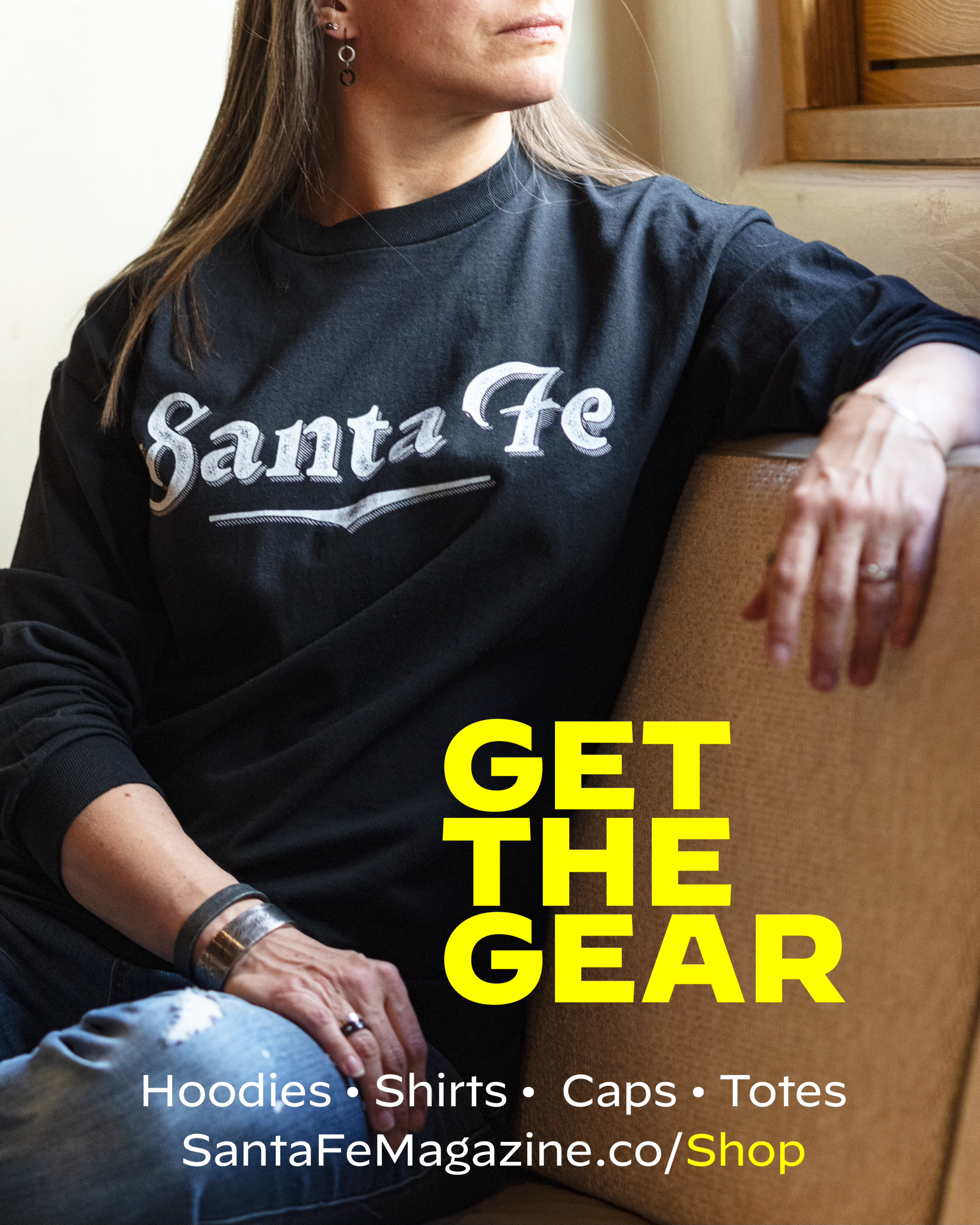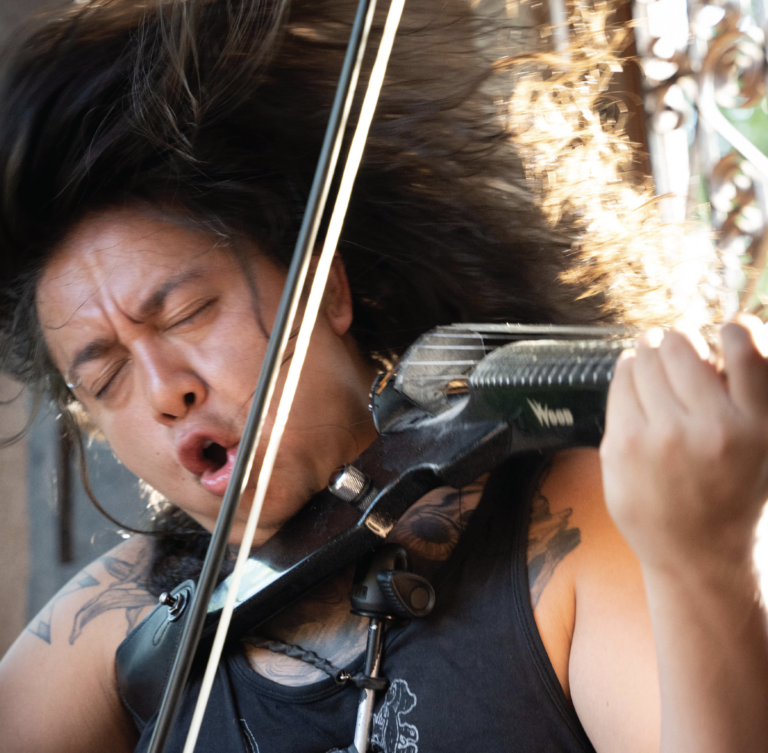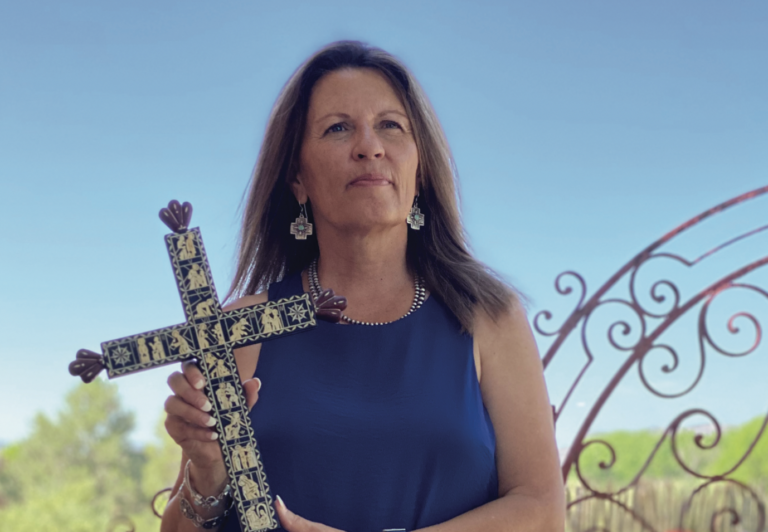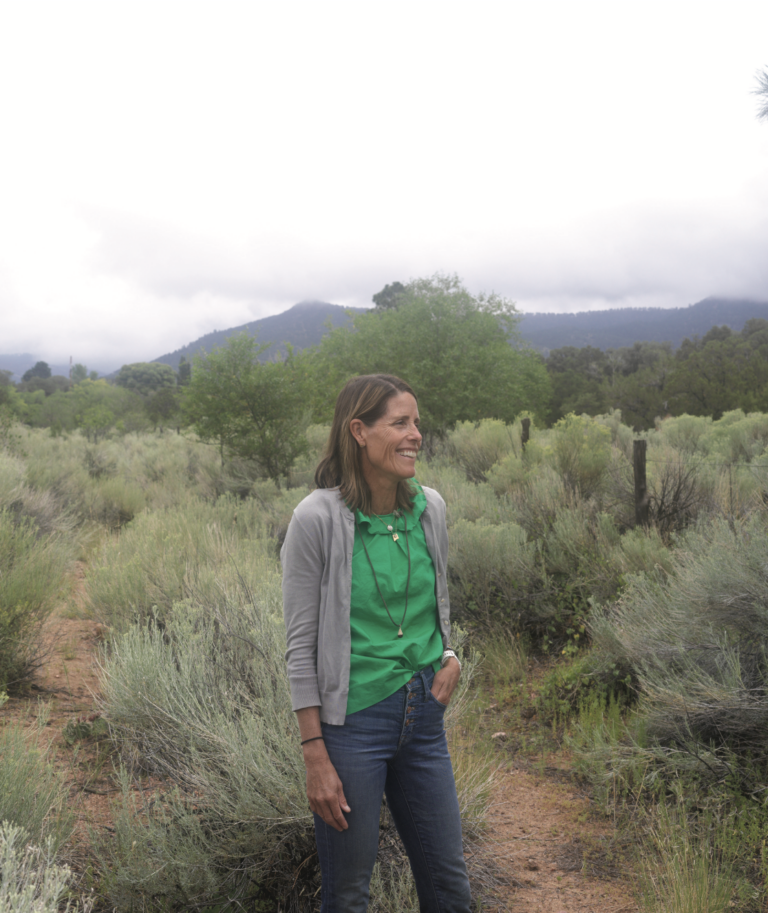OVER THE LAST 15 YEARS, that’s what Patrica has learned running Mustang Camp, a non-profit training center for wild horses for adoption. Located in a remote canyon in Northwest New Mexico, the Camp’s mission is to reduce the suffering of captive horses, accomplished through humane training, educating trainers, and getting horses adopted in suitable homes. With wild mustangs, that’s no mean feat. Patricia initially worked with the United States Forest Service to help with wild horses it didn’t know what to do with, and has now trained more than 600 animals for that federal agency, as well as for the Bureau of Land Management. Anja Rudiger, who runs an outpost of the Camp, Mustang Studio (just west of Galisteo), says Patricia’s 26-step program is uniquely based on innovative learning science. “Traditionally, you ‘break’ a horse,” she explained. “That method is based on fear and learned helplessness. You push them, make them do things that you want, things they don’t want to do. Patricia’s method is about positive reinforcement. The relationship is an equal partnership, an understanding of how the horse and human can live together.”
Imagine always being told “Yes. Yes. Yes.” Never “No.” That’s what we do with the mustangs. We want them to develop positive attitudes, so we use positive reinforcement…“Yes,” for everything that they’re doing. It works with all of the animals. It works with the mustangs. With mules. It works with zebras. Now, some of them might take a little longer; just like us humans, they all have different emotional issues.
El Jefe was gathered from the central Rio Grande Valley as an adult stallion before he landed at an equine rescue. He didn’t take to domestication easily.
He pinned his ears and threatened to kick anyone who came into his pen. No one could work with him at the rescue, so they sent him to me. I started training him through a fence for protection, and he decided that he liked my games. Before too long, we were friends. That’s the power of positive reinforcement.
Our training protocols are based on the theories of Applied Animal Behavior. We study all effective ways of training, but have gradually come to use mostly positive reinforcement, because it gives the best results for producing a friendly animal, no matter what the starting age is. The taming of oxen, as studied by Dr. Drew Conroy, provides the best-understood model of animal taming. Conroy breaks it into two basic processes: initial acclimation to humans and capture/restraint training. During the acclimation, the goals are: (1) to calm the animals; (2) reduce their flight distance; (3) make them realize they need not fear humans; and (4) let them become familiar with their trainer. During the second process, the animals learn to accept touch, handling, and restraint. When mustangs are given this same type of training, these wild horses quickly becomes as tame as domestically raised horses.
Horses don’t think in language like we do. Of course, animals can’t understand in language, either—they take our verbally given clues as sound signals without a moment of abstract thought. This does not mean they are not highly intelligent. When you can’t sleep at night and the world is very still, try not thinking in language. See what it feels like. Things get very sensory-based. Just get rid of them…get rid of the words.
Research shows that horses likely feel a wide range of emotions…fear, joy, happiness, shame, embarrassment, resentment, jealousy, rage, anger, love, pleasure, respect, relief, disgust, sadness, despair, and grief. The typical objections to saying animals feel these things is, “How do you know?” But how do you know what anyone other than you feels?
Positive emotions have not been studied nearly as much as negative ones. Very little is known about the chemistry of satisfaction, but the chemistry of motivation has received more attention. There appears to be at least two distinct classes of positive motivational states in the brain. One is an appetitive emotional system, devoted to foraging and reward seeking, and dependent on dopamine. A second is involved in processing sensory pleasure, such as pleasurable touch and taste. But when a mad scientist destroys the dopamine in some poor creature, there is no motivation left.
Wild horses can be downright drama queens. Look, they are still really, really wild, and it just doesn’t take very much to push them up over the edge to panic. You look at the situation and think, “What is the big deal here?” Well, the big deal is that a little while ago there was a weird noise and now there’s a dog walking around the property, and if that isn’t enough, there’s a strange piece of trash blowing in the wind and, well…it just all adds up. It’s never one thing.
See from their perspective. That’s the most important thing. The more empathy we have with animals, the more we see how to help them. It makes them feel good—and, by the way, it makes us feel good, too.
The best thing about horses is that they are totally honest. They don’t know how to lie. It’s not part of who they are.
The worst thing about them is that they don’t outlive us. Often because of colic, which kills them, and is very painful. They get it because of their gastrointestinal tract. Horses have a complicated digestive system, with several places where it constricts. This unfortunate design predisposes them to colic. There was a famous veterinarian, Dr. [Jose Plutarco “Joe”] Quintana, in Four Corners, who used to say that when he died, the first thing he was going to ask God was why she designed horse guts that way. He died, but I don’t think he got God to change a thing.
Learn more at mustangcamp.org
Photo Patricia Barlow-Irick








